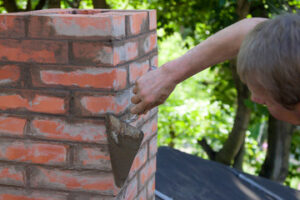If your home’s insulation is damaged or old, it can affect your indoor air quality. This can lead to mold, pests, and a variety of other issues that are best addressed promptly.

Find a local service that is skilled in both fiberglass and cellulose Perth Insulation Removal. This ensures that they understand the nuances of each material.
The decision to remove old insulation is a significant one, and should not be taken lightly. The process can be time consuming, and can be very messy depending on the type of insulation and the situation. It is always a good idea to get professional advice before starting.
There are several different types of insulation that you can choose from, and each type of insulation has its own benefits and drawbacks. For example, blown-in insulation can be very difficult to remove. It will need to be vacuumed out using a commercial vac, and the waste will need to be properly disposed of. This type of insulation also is very sensitive to moisture, so a good ventilation system needs to be in place to prevent any problems with mold growth.
On the other hand, faced insulation is a much easier material to remove. Foam board insulation can be removed with a simple tool, and this is a very fast process. It is important to note that foam board insulation will still need to be disposed of properly, though.
In most cases, removing loose fill insulation in an attic will be necessary when the existing insulation has become infected with mold, pests, or just simply is ineffective. It is important to inspect the condition of your attic insulation before deciding to replace it, as contaminated insulation poses health risks.
If the insulation in your attic has been compromised by rodents, it will need to be completely removed and replaced. Rats love to make their homes in attic insulation, and they leave behind urine and droppings that can spread disease.
Before you begin the insulation removal process, it is important to have the proper equipment and safety gear. A utility knife is essential for cutting through the fiberglass, and a mask, goggles, and full body coveralls are recommended. This will help to protect your lungs and skin from dust, mold, and other potential allergens. It is also important to cover your floors and walls with drop cloths to avoid any mess. Once you have all your gear, it is time to start the insulation removal process. Start at the furthest point from your attic access door, and work your way backwards to ensure you don’t track contaminated insulation throughout the rest of your house.
Creating a Plan
Old insulation can be difficult to work with, especially in tight spaces like attics. For this reason, it’s crucial to create a removal plan before starting the process. The plan should take into account the type of insulation, the condition, and potential hazards. A removal plan will help ensure that the job is completed efficiently and safely.
Insulation removal can be done by hand or machine, and each has its pros and cons. Choosing a company that has experience with the type of insulation in your home and the appropriate safety protocols is important for an effective removal. A quality company will also have the appropriate equipment and tools for the task. Personal referrals and online reviews can be helpful in selecting a company that’s right for you.
Before beginning the insulation removal process, you should clear your attic space of stored items and valuables. This will prevent them from being disturbed or damaged during the removal process and save you time and effort. You should also clear a path from the attic door to the outside of the house to avoid trips and falls.
Once the attic is cleared, you’ll need to gather your supplies. This includes a utility knife, a vacuum, heavy-duty garbage bags, and containers to hold the discarded materials. Additionally, it’s a good idea to wear personal protective equipment (PPE) during the removal process. This will protect you from dust, mold, and other contaminants.
It’s essential to check local regulations for guidelines on how to dispose of the disposed insulation. A professional insulation removal service will follow these guidelines, ensuring that the waste is handled in an environmentally responsible manner.
Upgrading your insulation is a great way to make your home more energy efficient. The new insulation will trap the heat in the winter and prevent it from escaping during the summer, lowering your energy bills. Additionally, new insulation can improve your home’s indoor air quality by reducing the amount of moisture in the attic space.
The type of insulation in your home is a big factor in how much it will cost to remove and replace. Fiberglass batt insulation is one of the most cost-effective options for attics and walls, while cellulose or spray foam offer superior performance in basements and exterior walls.
Thorough Preparation
Before beginning insulation removal, it is important to thoroughly assess the attic space. This will help determine the type of insulation you’re dealing with and how much time and effort it will take to remove it. Additionally, it will enable you to plan for any potential hazards or obstacles that may hinder the process.
The first step of the assessment process is to clear the area. This includes removing any storage items and ensuring the attic entrance is free of obstructions. It is also recommended that you inspect the space for any potential safety hazards, such as electrical wires or structural issues. Identifying these issues early can help reduce risk and save you from potentially expensive damage or injury later on in the project.
Next, it’s important to gather the necessary materials and equipment for the job. This includes a utility knife and a vacuum, as well as trash bags or dumpsters for collecting and disposing of the old insulation. It is also recommended that you wear protective clothing, including long sleeves, pants, a hat, and a respirator mask. This will minimize your exposure to harmful particles and ensure you’re able to effectively work in the attic without discomfort.
Once you’re ready to begin, start at the farthest corner of the attic and work your way back towards the attic entrance. This will prevent you from tracking debris through areas you’ve already cleaned and makes it easier to keep a consistent working pattern. Finally, it’s a good idea to consult local waste disposal guidelines to ensure you follow proper procedures for handling and transporting the insulation.
It’s also important to note that blown-in cellulose and fiberglass batt insulation will require different approaches, depending on the material type. Loose-fill insulation is typically more difficult to remove than other types, and requires specialized equipment to avoid inhaling the dust or fibers.
Safety First
Insulation removal can be a demanding DIY project for homeowners and requires adherence to strict safety measures. If not done properly, it can create health risks and damage your home. Before starting, make sure you have the right equipment and prepare your workspace.
Start by clearing your attic space of any stored items to avoid unnecessary damage or contamination. You’ll also want to put on your protective gear, which includes gloves, goggles, and a respirator to guard against inhaling fibers, dust, or mold spores. A tarp can help to catch the insulation bags as you fill them, and a ladder is important for accessing the attic space.
Once you have your equipment in place, it’s time to get started. It’s essential to turn off the power to your attic and disconnect any live wires before beginning. Working around live wires can lead to electrical shock or even fire, which can be dangerous for you and your family members. Turning off the power creates a safe working environment and minimizes the risk of accidents and injuries.
Depending on the type of insulation in your home, you may need to take different approaches. For more compact insulation, such as batt and rolled fiberglass or cellulose, you can usually simply cut it into smaller pieces and manually remove it from the attic. For loose-fill insulation, such as blown in cellulose or fiberglass, you’ll need to use a special vacuum system. This will ensure that the contaminated insulation is safely captured and doesn’t spread throughout your home.
It’s also important to check with local regulations on how to dispose of your old insulation. Many waste management companies offer pickup or drop-off services for insulation, and it’s best to follow those guidelines to prevent any environmental hazards. For the most environmentally-friendly option, some insulation materials can be recycled, so it’s important to choose a company that offers this service.


